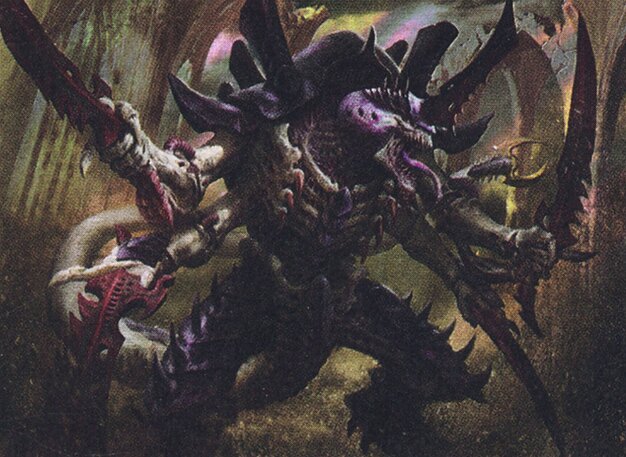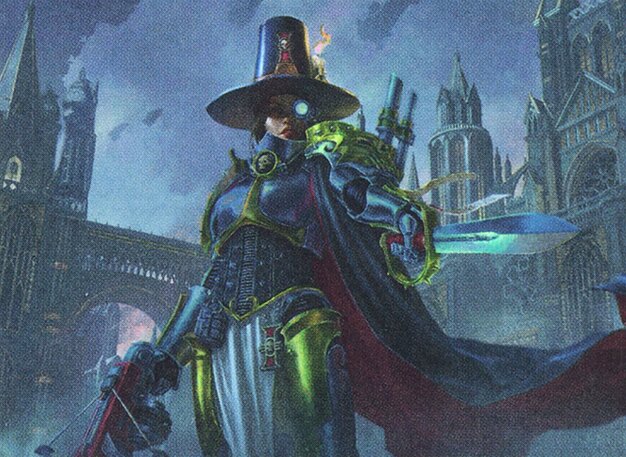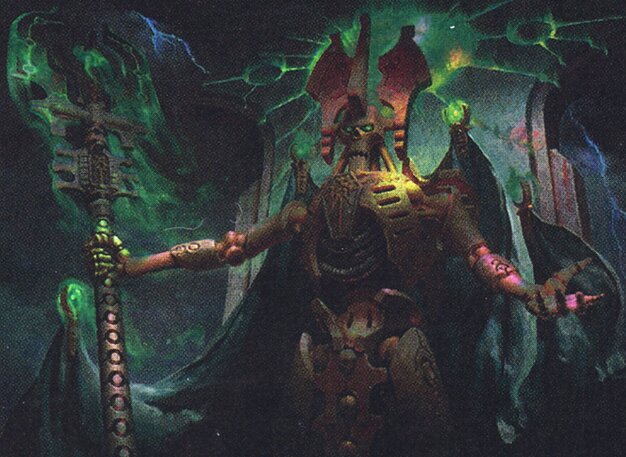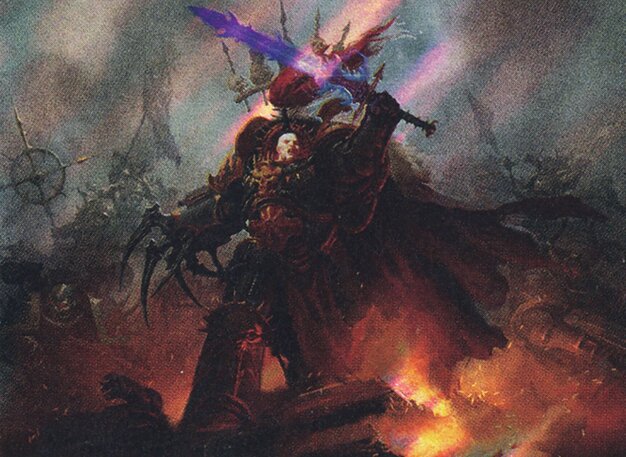Deck & Commander Strategies

The Swarmlord
Leverages +1/+1 counters and regeneration to grow bigger with each recast, drawing cards when creatures with counters die, aiming to flood the board with resilient creatures and overwhelm opponents.

Inquisitor Greyfax
Utilizes wide boards of Space Marine tokens with vigilance and tap-down abilities to control the battlefield, disrupt opponent creatures, and maintain defensive pressure.

Szarekh, the Silent King
Focuses on milling opponents and reanimating artifact creatures or vehicles from the graveyard to gain card advantage and maintain a persistent board presence.

Abaddon the Despoiler
Employs cascade triggered by opponents' life totals to chain multiple spells, generating explosive turns and overwhelming the board with chaos-themed creatures and effects.
Gameplay Insights
- 1
The Swarmlord's ability to grow bigger with each recast and draw cards on countered creatures dying effectively fueled continuous pressure and card advantage.
- 2
Inquisitor Greyfax's tap ability on opponent creatures provided critical tempo control, allowing the player to hold a strong defensive line with vigilant creatures.
- 3
Szarekh's mill and artifact recursion created a unique resource loop that kept the board resilient even after removal spells hit key pieces.
- 4
Abaddon's cascade ability turned opponents' life totals into a resource for explosive spell chains, forcing other players to carefully consider their life total management.
- 5
The thematic flavor of each deck was well represented through mechanics that matched their Warhammer 40K lore backgrounds, enhancing immersion and strategic depth.
Notable Cards
-

The Swarmlord
-

Inquisitor Greyfax
-

Szarekh, the Silent King
-

Abaddon the Despoiler
Gameplay Summary
The game featured four distinctive Warhammer 40K-themed Commander decks battling in the grim darkness of the far future.
The Swarmlord player focused on a growing swarm strategy, utilizing +1/+1 counters and draw effects to overwhelm opponents with aggressive and resilient creatures.
Inquisitor Greyfax led a wide board of vigilant Space Marines, using tap effects and token generation to control the battlefield and disrupt threats while maintaining a strong defensive posture.
Szarekh, the Silent King, piloted a mill-oriented deck that synergized with artifact creature recursion from the graveyard, aiming to leverage milling to gain card advantage and replay key threats.
Abaddon the Despoiler brought a chaotic cascade-based deck that benefited from opponents' life totals to potentially chain powerful spells and gain board dominance. Key turning points included the Swarmlord's rapid growth and card draw from creatures with counters dying, enabling continuous pressure.
Greyfax's ability to tap down large threats and create a vigilant army provided a solid defensive backbone and tempo control.
Szarekh's milling and artifact recursion threatened to replenish resources and sustain threats beyond typical removal.
Abaddon's cascade mechanic presented explosive turns as he cast multiple spells in sequence, swinging momentum in his favor.
The game revolved around managing these escalating threats and timing board wipes or removal to curb the relentless pressure from the Tyranids and the Ruinous Powers.
Ultimately, the interaction of these mechanics shaped a dynamic battle where survival depended on balancing aggression, control, and resource management.














![Warhammer 40k Commander decks [Commander VS 309] | Magic: the Gathering Commander Gameplay thumbnail](https://i.ytimg.com/vi/HZ99iaWk-Tk/sddefault.jpg)








